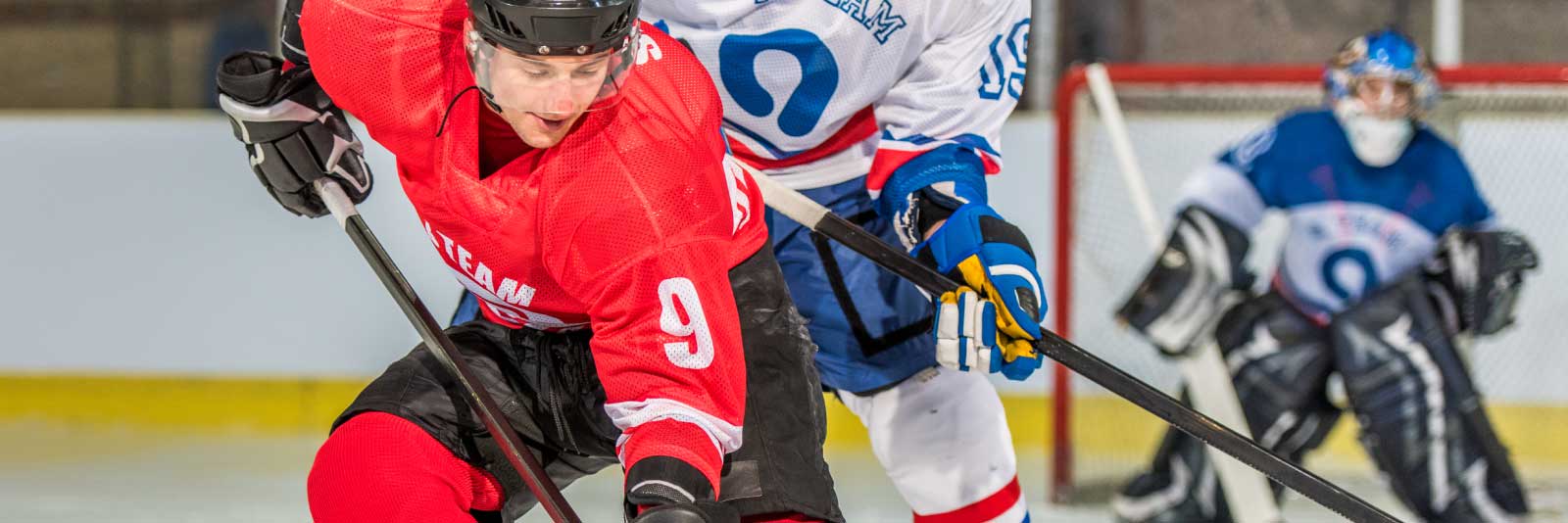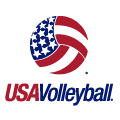Hockey Skills and More That Are Important to College Coaches

“What do college hockey coaches look for in hockey recruits?” “What is the difference between NCAA and ACHA hockey?” “How do I get recruited by a NCAA Division 1 hockey program?” “What is the most important skill in hockey?” Regardless of the position you play on the ice, college coaches have specific criteria and skills expectations. Many coaches focus their college hockey recruiting efforts on elite athletes with USA junior hockey experience and international athletes. As a matter of fact, 1,645 athletes (21.6 percent) of men’s college hockey athletes competed international for other countries, with 462 athletes coming from Canada and 62 from Europe.
This section looks at the different ice hockey positions and what college coaches look for in these athletes at the different NCAA division levels.
Quick Links
Hockey skating: How important is speed in hockey?
While USA junior hockey leagues are known for elite talent, it still isn’t as fast paced as college hockey. To find recruits who can successfully manage the transition to college hockey, coaches look for athletes with raw athleticism, including speed and coordination. Athletes with these skills can more confidently handle the transition to college hockey than athletes who rely less on speed and more on stick skill and hockey sense.
Related Articles
Hockey recruiting guidelines (all positions)
| Tier 1 (NCAA D1) | Tier 2 (NCAA D3 & NCAA D2 | Tier 3 (ACHA D1) | Tier 4 (ACHA D2 & ACHA D3) | |
| Club Experience | player on Junior A Tier 1 or Tier 2 Level program (US & Canada), Top-End Prep PG Year, Top player on U16 or U-18 AAA program | Top player/impact player on Junior A Tier 2 or Tier 3 Junior Hockey, Top-End Prep PG Year, Top Player on U18 AAA. Commit players from Junior hockey | Tier 2 or Tier 3 Junior A players (Top to Middle End), Varsity Prep PG Year, U-18 AAA Hockey experience | Recruit players from Junior A Tier 3 (not necessary), U-18 AAA, High-Level AA |
| High School Experience | Top Prep School (US/Canada), Top player on Varsity HS Program (MN, MI, MA) | Top Prep School (US/Canada), Top player on Varsity HS Program (MN, MI, MA) | Prep School & High level Varsity HS | Prep School or Varsity Hockey (low club) |
How to play NCAA Division 1 hockey
Tier 1 Goalie: College coaches at the Division 1 level are looking for hockey goalies that are swift, alert and fearless. These athletes must be able to move quickly up and down and side to side within the cage. They have strong lateral skating ability. They are vocal contributors throughout the game, leading the defense as they try to prevent scoring opportunities and claim possession of the puck. Tier 1 goalies are both able and willing to play the puck and have great rebound control. Goalies at this level need to be game changers. They also must possess confidence and be successful in big-time situations.
Tier 1 Defenseman: What makes a great hockey defenseman? Division 1 college coaches fill their defensive team with athletes who have strong physical presence on the ice. This can be both in height and weight, as well as confidence and determination. These athletes can move fluidly around the rink, have quick lateral movement and position themselves in front of the net to prevent scoring opportunities. They have to be smart with an extremely high hockey sense, which allows them to read the ice very well, be positionally sound and able to anticipate the play very well.
Tier 1 Winger: To play as a winger at a NCAA Division 1 program, recruits will need to prove that they can make a scoring impact. College coaches look for athletes that are strong on the boards and can win battles in the corners. Tier 1 wingers are fast skaters and quick to react when the puck is in their possession. They have a strong shot and are consistent when scoring goals. These players are also able to anticipate the play and keep the game simple, most of the time.
Tier 1 Center: To play center at an NCAA Division 1 college, recruits need to be elite, tier 1 athletes. Centers cover more of the rink than any other player, so they must be strong, quick skaters. Tier 1 athletes dominate during face-offs and are quick to react once possession is established. These athletes are able to make challenging passes and goals. As the most flexible position on the ice, these athletes must be able to play both offense and defense. Understanding all aspects of the game for a Center is vital to a team’s success. These players touch the puck frequently which means they must have good puck-handling skills and be able to anticipate the play very well. They also must be vocal and understand the importance of communication.
How to play NCAA Division 2 and Division 3 hockey
Tier 2 Goalie: Division 2 and Division 3 college coaches focus on goalie talent with good skating, puck control and leadership skills. Tier 1 goalies are good at covering the cage efficiently with good lateral skating ability and fast twitch muscles. They serve as leaders in the game, communicating with the defense continuously as an extra set of eyes on the opponent. These athletes are able to handle the puck well and control rebounds. Must have junior experience and be able to handle themselves in big time situations.
Tier 2 Defenseman: Division 2 and Division 3 college coaches recruit older junior players. These athletes have strong skating skills that allow them to make quick lateral movements. In most cases, these athletes are able to position themselves in front of the goal to prevent scoring opportunities. Tier 2 defensemen have a high hockey IQ, which they use to control the game and predict their opponents plays. They also are able to understand the effectiveness of good stick on puck and body positioning. Quick puck movement is also a must from a Division 2 and Division 3 defenseman.
Tier 2 Winger: Tier 2 wingers have the mental and physical skillset and experience to play NCAA Division 2 and Division 3 hockey. They are good on the boards and are typically able to come out on top during corner battles. Tier 2 athletes are quick skaters with good reaction time and puck handling skills. They understand their fore-checking responsibilities and are good positional players in all zones. They have a high hockey sense and have high level experience.
Tier 2 Center: Much like tier 1 centers, athletes that play at a tier 2 center level are very quick and smart athletes. College coaches at the NCAA Division 2 and Division 3 levels tend to focus their recruiting efforts on athletes at the junior level. These athletes are quick skaters that are able to cover the rink when switching from offense to defense. They win most face-offs and are able to maintain possession and create offensive opportunities. Understanding all aspects of the game for a center is vital to a team’s success. These players touch the puck frequently which means they must possess good puck-handling skills and be able to anticipate the play very well. They also must be vocal and understand the importance of communication.
How to play ACHA hockey
ACHA Division 1 hockey
Tier 3 Goalie: Playing for an ACHA Division 1 hockey program requires goalies to be aware of their strong suits and open to feedback on areas they can improve. College coaches at the ACHA Division 1 level focus their recruiting efforts on goalies that are older and have a lot of high-level experience. These athletes are very good with controlling their rebounds and understand the importance of positioning and confidence in the crease. Most of these goalies do have junior experience and are able to handle themselves in big time situations.
Tier 3 Defenseman: Tier 3 defensemen bring passion and drive to the game, but they are lacking in a few areas where higher tiered athletes excel. These athletes have a decent physical presence on the ice, understand good stick on puck checking, but may be a bit slow to make decisions. These athletes hesitate and second guess themselves. These athletes are good skaters and are able to move/transition both forward and backwards effectively. Most of these defensemen have high level club experience or even juniors experience, as well.
Tier 3 Winger: At the ACHA Division 1 level, college coaches recruit tier 3 wingers. These athletes are successful in creating scoring opportunities, but only make a fraction of the shots they attempt. When playing the boards and in corner battles, these athletes are able to stand their ground and maintain possession of the puck. These athletes are good skaters with a strong enough hockey sense to react quickly and appropriately when they gain possession of the puck.These athletes may also hesitate and second guess themselves.
Tier 3 Center: ACHA Division 1 college coaches favor athletes at the tier 3 level. While these athletes are strong skaters, they are not as fluid in the transition from offense to defense when the puck changes possession. These athletes are good on their draws, possess good puck skills, but are not as quick to make decisions. Tier 3 centers have a good passing game to assist their offensive teammates, but they may not control the game as NCAA centers would.
ACHA Division 2 & ACHA Division 3 hockey
Tier 4 Goalie: Most tier 4 goalies are bound for college club hockey programs. These athletes have room to improve when it comes to reaction time, vocal leadership and coverage of the cage. These athletes are not as flexible in the cage, making it hard to stop all scoring attempts from various angles. Tier 4 athletes are not as vocal and alert and goalies in the higher tiers, making them less useful to the defense when shutting down an opponent’s offense and reclaim puck possession. When these goalies do prevent a scoring opportunity, they struggle to play the puck and maintain control of the rebound. They also may not have high level club or junior experience.
Tier 4 Defenseman: These athletes’ skillset is best suited for club hockey programs at the collegiate level. Tier 4 defensemen lack the advantages of a dominating physical presence on the ice. As a result, they are not able to position themselves in front of the cage to effectively stop scoring opportunities and make the goalie’s job easier. These athletes are good skaters but could improve on their quick lateral movement. When it comes to hockey IQ, these athletes lack the competition experience of higher tier athletes who are superior at reading the ice well and their opponents. They may still understand the game but are not able to react as quickly as higher tier defensemen.
Tier 4 Winger: ACHA Division 2 and ACHA Division 3 club hockey programs recruit tier 3 wingers. These athletes understand their purpose on the ice and put good effort into creating scoring opportunities, though they make few of the goals that they attempt. These athletes often give up possession when playing the board and in corner battles. While still relatively good skaters, these athletes need to improve their reaction time and puck skills are not their strong suit. They may not completely understand their positioning in all zones.
Tier 4 Center: Athletes with the skills of a tier 4 center are best suited for an ACHA Division 2 and ACHA Division 3 club hockey programs. These athletes are still learning how to successfully transition from offense to defense and keep up with the fast pace of the game. They also may not have as high of club or high school experience needed in order to improve their game. They win a small percentage of face-offs and often require the help of other teammates to maintain possession of the puck. These athletes can benefit from further practice on passing the puck and shooting goals, especially in high pressure situations.
What is the difference between NCAA and ACHA hockey?
The main difference between the NCAA and ACHA hockey is that the NCAA offers athletic scholarships. Institutions do not fund ACHA programs through their athletic budgets, but rather these programs are funded by student services and player fees each season. These non-varsity programs play at institutions across the country and are known for being well organized and supported by the campus community. In many cases, top ACHA programs are equal to or better than NCAA Division 3 programs.
What is hockey sense and why do you need it?
A truly elite hockey athlete is set apart from the crowd of athletes by their hockey sense. Also known as hockey IQ, this is an athlete’s ability to be fully aware what is going on around them during competition. This means they have the ability to read the ice and follow the puck, their teammates, opponents, all while being aware of their position on the ice. College coaches look for athletes that display a high hockey sense during camps, tournaments, combines and in highlight video. How does the athlete respond to the quick pace of the game? Does the athlete both understand and execute strategic plays? How does the athlete evaluate a situation to determine what action to take? Does the athlete have the necessary years of experience to understand when and how to take action in various situations?
















